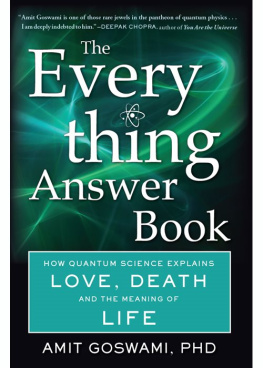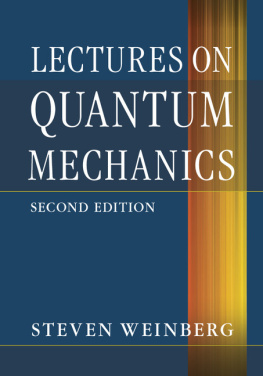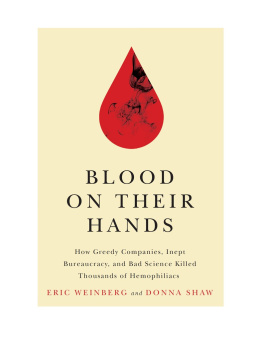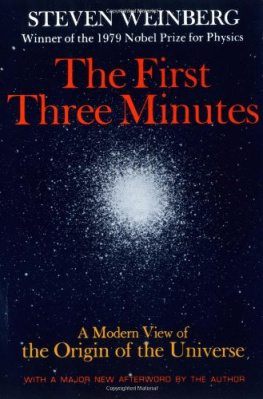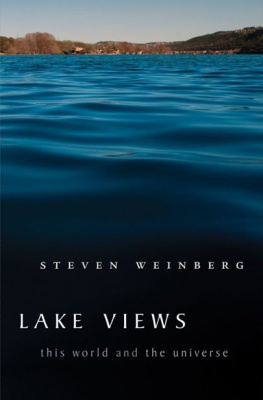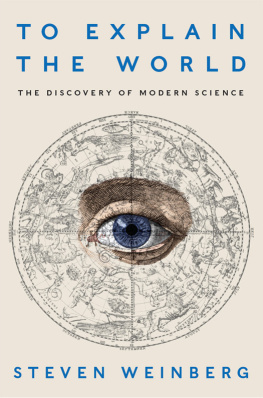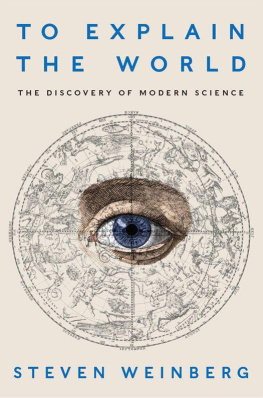978-0-674-97532-3 (alk. paper)
Names: Weinberg, Steven, 1933 author.
Title: Third thoughts / Steven Weinberg.
Description: Cambridge, Massachusetts : The Belknap Press of Harvard University Press, 2018. | Includes bibliographical references and index.
Subjects: LCSH: Science.
This is the third collection of my essays for general readers published by Harvard University Press. Some of these essays are polemics on subjects such the harm done by inequality, the folly of programs of manned space flight, the wrongheadedness of some fashions in writing history, the danger of global warming, and the importance of support for public goods, including basic science. As before, they present a point of view that is rationalist, realist, reductionist, and devoutly secular.
Other essays aim at explaining aspects of modern physics and cosmology and their past in nontechnical terms. In some cases footnotes have been added to clarify things that may have been obscure in the essays as originally published. I fear that the reader will find some scientific topics repeated from one essay to another, including broken symmetry, weak and strong nuclear forces, the early universe, and the multiverse. It cant be helpedthese days, these topics are much on the minds of many physicists.
As in the earlier collections, Facing Up and Lake Views, most of these essays were published in the New York Review of Books, in newspapers, and in other periodicals. Essays 20, 23, and 25 are brief talks given at university graduations, and have not been previously published. Essay 24 has not been published until now because everyone who read it disagreed with it, but I am fond of it and so bring it out here.
In this volume I have departed from my practice in earlier essay collections, in which I arranged all essays together in chronological order. I have here instead sorted the essays out into four broad categories, and arranged them in chronological order only within each category. But these categories should not be taken too seriously. In discussing historical matters in , on public and personal matters.
I owe a great debt to editors who have helped to bring these essays to the reading public. In particular, thanks are due to Michael Fisher, who first suggested that Harvard University Press bring out a collection of my essays, to Jeff Dean, for good advice and for seeing the current collection through to publication, and to the late Robert Silvers, who worked with unending skill and patience to improve my articles in the New York Review of Books. I take this opportunity to give special thanks to Louise Weinberg. Taking time from her own writings on law, she read the early drafts of many of these articles, provided the titles for many of them and for Facing Up and To Explain the World, suggested the Grimshaw painting for the jacket of this volume, and gave valuable advice about rearranging material. Many obscurities and puerilities were avoided through her help.
From past experience, it seems that at my rate of writing it takes about a decade to produce enough new essays for assembly in a collection. I hope nevertheless that this will not be my last collection. But given actuarial realities, perhaps this would be a good time for me to add a word of thanks to readers who over many years have put up with my polemics and explanations, and have thereby given me a precious contact with the world beyond physics.
This essay had its start in a lecture I gave on the deck of the barkSea Cloudwhile cruising the Aegean Sea. The passengers were mostly friends from Austin, visiting sites of the ancient world. In the spirit of the voyage I volunteered to give an evening talk on a subject that had lately fascinated me, Greek astronomy.
A few years later I recycled this lecture in a talk at the Harry Ransom Center in Austin. The HRC has a superb collection of materials related to literature and other arts, but it has not concentrated much on science. Nevertheless, in September 2009 it was able to put on a grand show, Other Worlds: Rare Astronomical Works, including early editions of Copernicus and Galileo. As an enthusiastic amateur in the history of science I was glad to be asked to give an evening talk to help celebrate this exhibition. I was also glad to have this chance to take a swipe at a bte noire, NASAs wasteful program of manned space flight.
I then sent a written version of my HRC talk to Robert Silvers at theNew York Review of Books.It was published the following month, on October 22, 2009, illustrated with a copy of one of the HRC exhibits, the frontispiece of GalileosDialogue Concerning the Two Chief Systems of the World,showing figures representing Aristotle, Ptolemy, and Copernicus. This is pretty much the essay that appears below, with only a fewcorrections. Later it also served as the basis of chapter 6 of my bookTo Explain the World.
A few years ago, I decided that I needed to know more about the history of science, so naturally I volunteered to teach the subject. In working up my lectures, I was struck with the fact that in the ancient world, astronomy reached what from a modern perspective was a much higher level of accuracy and sophistication than any other natural science. One obvious reason for this is that visible astronomical phenomena are much simpler and easier to study than the things we can observe on the Earths surface. The ancients did not know it, but the Earth and Moon and planets all spin at nearly constant rates, and they travel in their orbits under the influence of a single dominant force, that of gravitation. In consequence the changes in what is seen in the sky are simple and periodic: the Moon regularly waxes and wanes, the Sun and Moon and stars seem to revolve once a day around the celestial pole, and the Sun traces a path through the same constellations of stars every year, those of the zodiac. Even with crude instruments these periodic changes could be and were studied with a fair degree of mathematical precision, much greater than was possible for things on Earth like the flight of a bird or the flow of water in a river.
But there was another reason why astronomy was so prominent in ancient and medieval science. It was useful, in a way that the physics and biology of the time were not. Even before history began, people must have used the apparent motion of the Sun as at least a crude clock, calendar, and compass. These functions became much more precise with the introduction of what may have been the first scientific instrument, the gnomon, attributed by the Greeks variously to Anaximander or to the Babylonians.
The gnomon is simply a straight pole, set vertically in a flat, horizontal patch of ground open to the Suns rays. When during each day the gnomons shadow is shortest, that is noon. At noon, the gnomons shadow anywhere in the latitude of Greece or Mesopotamia points due north, so all the points of the compass can be permanently and accurately marked out on the ground around the gnomon. Watching the shadow at noon from day to day, one can note the days when the noon shadow is shortest or longest. That is the summer or the winter solstice. From the length of the noon shadow at the summer solstice one can calculate the latitude. The shadow at sunset points somewhat south of east in the spring and summer, and somewhat north of east in the fall and winter; when the shadow at sunset points due east, that is the spring or fall equinox.



